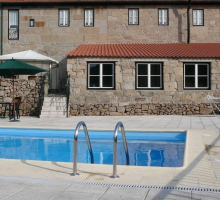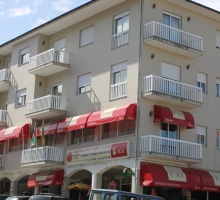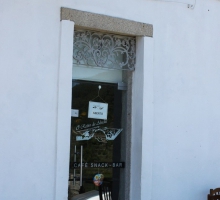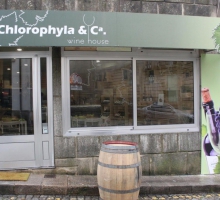The construction of the Monastery of São João de Tarouca began in 1154.This is also the first male Cistercian monastery built in Portuguese territory, closely linked to the founding of the nation and to the figure of D. Afonso Henriques.
Greatly enlarged in the seventeenth and eighteenth century with the construction of new buildings, among which stands out a new and colossal dormitory, two floors, unique in Portugal, the year 1834 would dictate the subsequent decay of the monastic complex, a direct consequence of the extinction of the Religious Orders decree. The church was converted into a parish church and the monastic premises were sold at public auction and its buildings used as a quarry until the beginning of the twentieth century.
Classified as a National Monument, the monastic complex integrates since 2009 the Varosa Valley Project, which has allowed the renewal of the Church and, since 2013, the ruins musealization, the result of an exhaustive archaeological excavation that took place between 1998 and 2007, which enabled the virtual 3D reconstruction of the original buildings. On the other hand, the only discovery in the world, a prayer ring during the archaeological work confirms the suspicions of a consecration ritual that the Cistercian monastic complex were subjected during its construction.
Priceless memory for the history of the region, the Monastery of São João de Tarouca is between the buildings that best reflects the Cistercian architecture, which can be identified from the musealization of the ruins, where you can see all dependencies and recognize all the expansions over the centuries the Monastery of São João de Tarouca was suffering.
Currently, under the Varosa Valley Project, it remains only the completion of the work of Casa da Tulha, old barn monastic, who welcomes the interpretive center of the site, in order to allow the full and integrated opening of the Monastery of São João de Tarouca, one of the most sought places for those who visit the region of Douro and Varosa.
The Tarouca Municipality invites you to discover the Varosa Valley.
Location: Tarouca
Greatly enlarged in the seventeenth and eighteenth century with the construction of new buildings, among which stands out a new and colossal dormitory, two floors, unique in Portugal, the year 1834 would dictate the subsequent decay of the monastic complex, a direct consequence of the extinction of the Religious Orders decree. The church was converted into a parish church and the monastic premises were sold at public auction and its buildings used as a quarry until the beginning of the twentieth century.
Classified as a National Monument, the monastic complex integrates since 2009 the Varosa Valley Project, which has allowed the renewal of the Church and, since 2013, the ruins musealization, the result of an exhaustive archaeological excavation that took place between 1998 and 2007, which enabled the virtual 3D reconstruction of the original buildings. On the other hand, the only discovery in the world, a prayer ring during the archaeological work confirms the suspicions of a consecration ritual that the Cistercian monastic complex were subjected during its construction.
Priceless memory for the history of the region, the Monastery of São João de Tarouca is between the buildings that best reflects the Cistercian architecture, which can be identified from the musealization of the ruins, where you can see all dependencies and recognize all the expansions over the centuries the Monastery of São João de Tarouca was suffering.
Currently, under the Varosa Valley Project, it remains only the completion of the work of Casa da Tulha, old barn monastic, who welcomes the interpretive center of the site, in order to allow the full and integrated opening of the Monastery of São João de Tarouca, one of the most sought places for those who visit the region of Douro and Varosa.
The Tarouca Municipality invites you to discover the Varosa Valley.
Location: Tarouca




